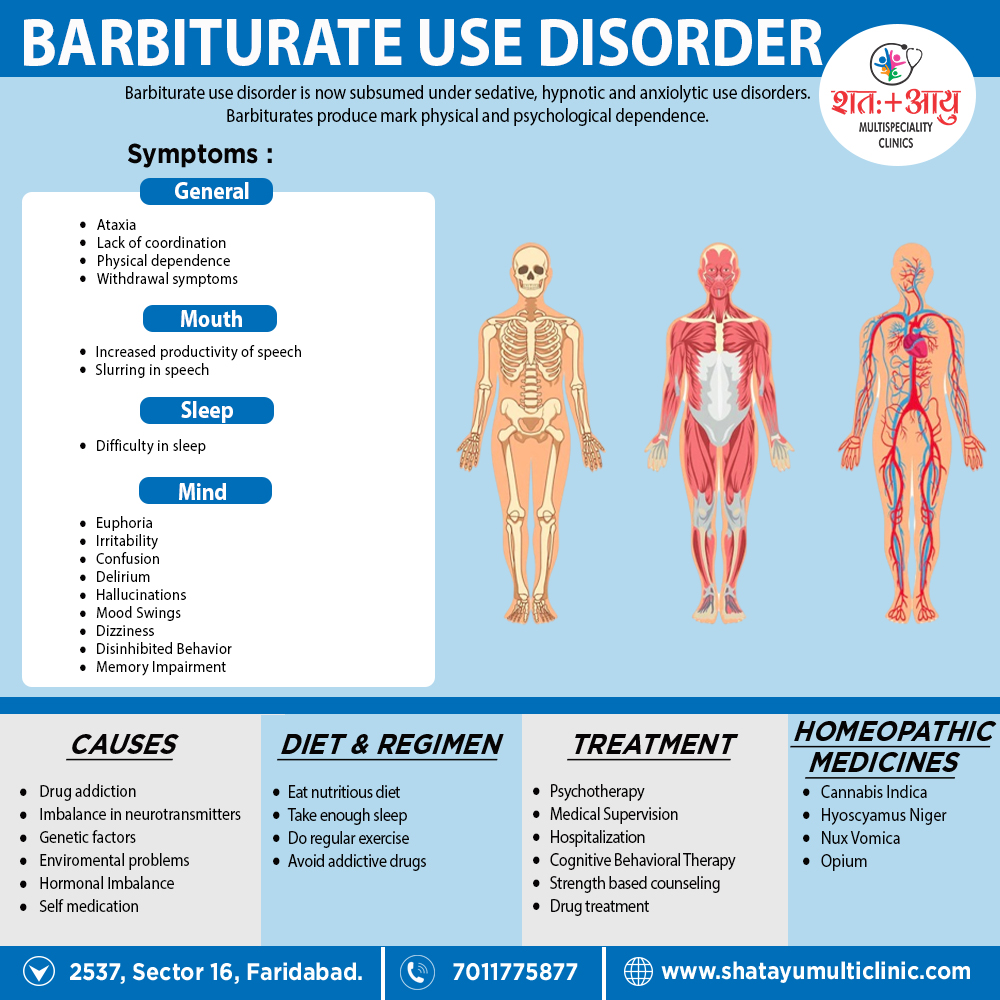Barbiturate use disorder:
The commonly abused barbiturates are secobarbital, pentobarbital and amobarbital. Their use has recently decreased markedly as benzodiazepines have replaced barbiturates in the majority of their clinical uses.
Barbiturates produce mark physical and psychological dependence. Tolerance (both central and metabolic) develops rapidly and is usually mark. There is also a cross tolerance with alcohol.

